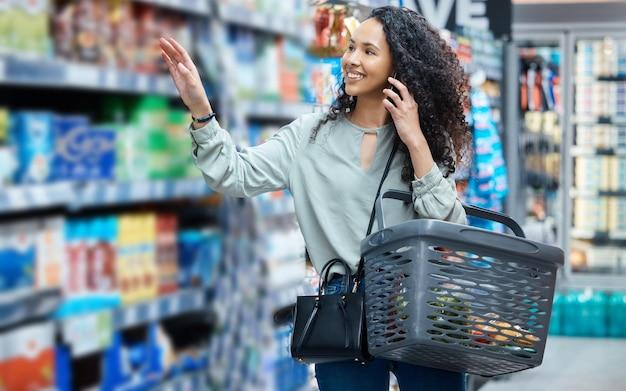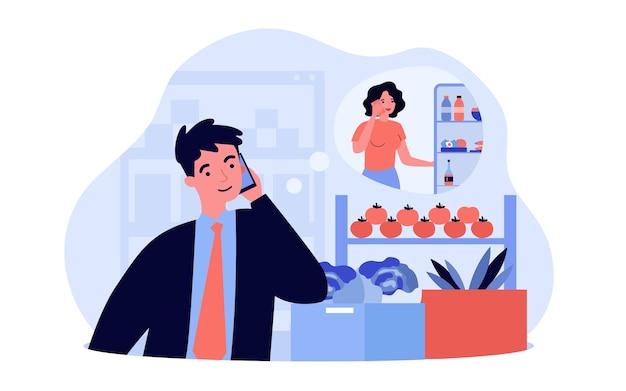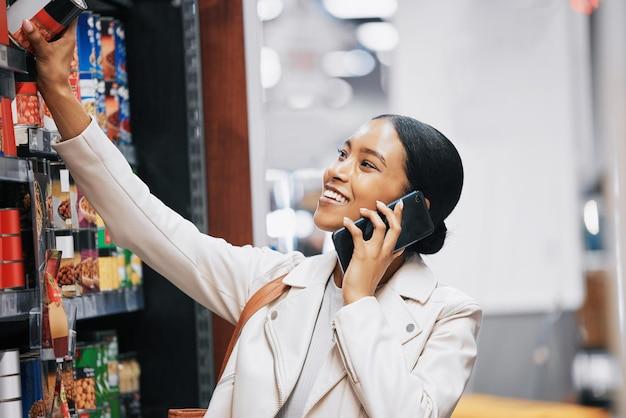If you’ve ever stepped into a retail store, you’ve likely come across various forms of in store communication. From posters, music, in-store announcements to product displays, all these subtle cues communicate with shoppers and influence their purchasing decisions. In this blog post, we’ll dive deep into the world of in-store communication, examining what it is, why it’s essential, and its various forms. Additionally, we’ll showcase some excellent examples of effective retail store communication systems that businesses can implement to increase sales and customer relationships. Let’s get started!
The Importance of In-Store Communication
Effective in-store communication is essential to the success of any business. It can help build customer loyalty, improve employee performance, and increase sales. A lack of communication, on the other hand, can lead to confusion, frustration, and lost business. Let’s take a look at some specific examples of how communication plays a vital role in the in-store experience.
Employee Training and Support
Your employees are your greatest asset. They are the ones who interact with customers and ensure they have a positive experience in your store. That’s why it’s essential to provide them with the training and support they need to succeed. By communicating clear expectations, providing ongoing training, and offering support when needed, you can help your employees feel empowered and confident in their roles.
Customer Engagement
In-store communication also plays a critical role in engaging customers. Whether it’s through signage, displays, or sales associates, you want to make sure you’re communicating effectively with your customers. By providing clear and concise information, highlighting special offers, and making sure your promotions are visible, you can attract and retain more customers.
Inventory Management
Tracking inventory and keeping products stocked is a critical part of running a successful business. In-store communication can help ensure that everyone on your team is aware of what products are in stock, what needs to be reordered, and when new products are arriving. This helps reduce confusion and streamline your inventory management process.
Efficient Checkout Process
Checkout is often the last impression a customer has of your store. That’s why it’s essential to communicate effectively during this critical step in the shopping experience. By providing clear pricing, using easy-to-use POS systems, and training your staff to handle transactions quickly and professionally, you can improve the overall checkout experience for your customers.
Communication is Key
As you can see, in-store communication is critical to the success of any business. By providing clear and concise communication to both your customers and employees, you can improve the overall shopping experience and increase your bottom line. Remember, effective communication is a two-way street, so make sure to listen to feedback from both customers and employees to continue improving your processes and driving success.
Pop Communication: How to Get Your Message Across in a Fun Way
In-store communication doesn’t have to be boring and dull. With the right approach, you can make it pop and get your message across in a fun and engaging way. Here are some tips for creating pop communication that will make your customers sit up, take notice, and maybe even dance a little.
Use Visuals and Colors to Make Your Message Stand Out
One of the easiest ways to make your communication pop is by using visuals and colors. Instead of relying on plain text, incorporate images, videos, infographics, and other visual elements that grab attention and convey your message more effectively. Use bright and bold colors that match your brand’s personality and design a layout that is eye-catching and easy to read.
Think Outside the Box and Be Creative
Pop communication means stepping outside the box and doing something that’s unexpected and creative. Instead of using the same old phrases or slogans, come up with new and fun ways to convey your message. Use puns, humor, and pop culture references that your target audience can relate to. Encourage your customers to interact with your message by asking questions, hosting contests, or creating polls that keep them engaged.
Incorporate Music and Sound Effects
Nothing gets a message across quite like music and sound effects. Use catchy tunes and jingles that people can sing along with or add sound effects that draw attention to your message. Be sure to match the music and sound effects to your brand’s personality and create a mood that your target audience will appreciate.
Keep it Short and Sweet
When it comes to pop communication, less is often more. Keep your message short and sweet, making sure it’s easy to read and understand in just a few seconds. Break up your message into smaller paragraphs with no more than 2-3 sentences per paragraph to make it easier to read.
Use Emojis and Gifs to Add Some Fun
Emojis and gifs are a great way to add some fun to your message and make it feel more casual and approachable. Use them to express emotions, add humor, or highlight important points. Just be sure to use them in moderation and only when they add value to your message.
In conclusion, pop communication is all about making your message fun, engaging, and easy to understand. Use visuals, colors, music, sound effects, and creativity to get your message across in a way that resonates with your target audience. Keep it short and sweet, and use emojis and gifs to add some fun and personality to your message. With these tips, you’ll be able to create pop communication that gets noticed, remembered, and shared.
In-Store Advertising: Enticing Customers With Creative Displays
When it comes to in-store advertising, there’s nothing quite like a well-crafted display to catch a shopper’s eye. From colorful window displays to enticing end-of-aisle presentations, in-store advertising can be a powerful tool for increasing sales. Here are some ideas for creating engaging displays that will captivate your customers:
Play to Their Passions
One of the best ways to create an effective display is to focus on a product or theme that your customers are passionate about. Are you a sports store? Put your best-selling team jerseys front and center. Are you an electronics store? Highlight the latest gaming consoles or audio systems. By tapping into your customers’ interests and desires, you can create an emotional connection that encourages them to make a purchase.
Make it Interactive
In today’s digital age, consumers expect more from their shopping experiences. Why not create an interactive display that allows them to engage with your products in a new and exciting way? Set up a demo station for a new gadget or toy, or create a “try-on” area for a line of clothing. By giving shoppers a hands-on experience, you’ll pique their curiosity and encourage them to explore your offerings further.
Keep it Fresh
One common mistake retailers make is keeping the same displays up for too long. To keep customers engaged, it’s important to switch things up regularly. Try changing your displays every 2-4 weeks to keep things fresh and exciting. Consider creating seasonal displays to coincide with holidays or changing trends in your industry.
Past Success Stories
Don’t be afraid to draw on past advertising success stories for display inspiration. Look at what worked well in the past and try to recreate that magic in your current campaigns. By implementing proven tactics and strategies, you can increase the chances of success for current and future displays.
In conclusion, in-store advertising is an excellent way to boost sales and engage your customers. By employing creative, interactive, and fresh displays that capture their interest, you can build a connection that leads to increased customer loyalty and repeat purchases.
Qué es In-Store Communication
So, you might be wondering, “¿Qué es in-store communication?” (What is in-store communication?) Well, my dear readers, let me break it down for you. In-store communication refers to the interplay of various communication channels within a physical store. This includes everything from graphics to signs, displays, and even the music playing in the background.
Graphics – It’s All About the Visuals
Graphics are the backbone of in-store communication. They come in various shapes and sizes, from standalone posters to ceiling-hangers to floor graphics. Graphics can serve a variety of functions, such as highlighting promotions, deterring theft, and guiding shoppers towards the products they’re looking for.
Signs – The Silent Guide
Signs are the quiet superheroes of in-store communication. While they might not be flashy or attention-grabbing, they’re essential in keeping the store running smoothly. Signs inform shoppers about opening hours, return policies, and product prices, just to name a few.
Displays – More Than Just Pretty Faces
Displays are the life of the party. They’re the ones that catch your eye and draw you towards them. Whether it’s a tempting offer or a product that’s perfectly arranged, displays help communicate the store’s brand and message to shoppers.
Music – The Silent Salesman
Last but not least, we have music. It may not seem like an essential part of in-store communication, but studies have shown that music has a significant impact on a shopper’s mood and behavior. Slowly paced music can make shoppers linger longer, while pop music can entice them to buy more.
Now that you know what in-store communication is, the next time you walk into a store, take a moment to observe how its graphics, signs, displays, and even music work together to create an enjoyable shopping experience.
Instore Communication: What’s That Again
If you walk into a store and don’t hear any sound or see any advertisement, you’re probably in a library. Instore communication is a necessary tactic, used to reach customers inside stores to ensure an optimal experience and increase revenue. It includes everything from the music that plays in the store to the signs and advertisements that encourage customers to purchase more items.
Things That Define Instore Communication
Music
Did you know that music affects how you shop? Yes, you read that correctly. Music affects the purchasing behavior of customers. It’s a powerful tool for enhancing the store’s atmosphere and keeping customers engaged. So, if you’re going to a store and hear some upbeat music, you’ll probably stay longer and buy more items.
In-Store Signs
Have you ever walked into a store and found a sign that caused you to buy more items? Of course, you have! Effective signages help to create a more engaging and interactive shopping experience. They help customers find their way around the store and remind them of upcoming sales and promotions.
Visual Merchandising
Visual merchandising is how stores display items to attract a customer’s attention. It’s about dressing up a product to make it more appealing. By showcasing products well, stores can improve the perception of the brands that they stock.
Why Is Instore Communication Important
Instore communication is critical because it can directly impact revenue. By applying sound merchandising techniques and creating a beautiful environment, stores can increase sales and improve customer satisfaction.
In conclusion, instore communication includes everything from music and signage to visual merchandising. Getting your instore communication right can lead to increased customer engagement and revenue. So, the next time you visit a store, pay close attention to your surroundings, and you may realize how effective instore communication can be.
In-Store Communication Examples
In-store communication is a crucial element for any retail business, and the use of creative and engaging communication methods helps in boosting sales and enhancing customer experience. Here are some in-store communication examples that are sure to inspire you:
Clever Signage
Signage is an excellent way to communicate with customers in-store. But why settle for a boring sign when you can use clever signage that is sure to catch the attention of your customers? For example, a sign that reads “Don’t be shy; try before you buy” is far more engaging than a dull “Try before you buy” sign.
Eye-Catching Displays
An eye-catching display is an excellent way to promote your products and attract the attention of your customers. Use creative displays that showcase your products in a unique and exciting way. You could use props, lighting, or even interactive displays to make your products stand out.
Interactive Technology
Incorporating interactive technology in-store can enhance the customer experience and keep them engaged. For instance, using touch-screen technology to allow customers to browse through your products or provide them with virtual product demos is a great way to keep them interested.
In-Store Events
Hosting in-store events is an excellent way to promote your products and attract new customers. You could host fashion shows, product launches, or even fun community events to bring people together and promote your brand.
Engaging Employees
Your employees are your biggest asset when it comes to in-store communication. Encourage them to be engaging, friendly, and approachable. Invest in their training, and provide them with the necessary tools to communicate effectively with your customers.
In summary, in-store communication does not have to be boring. Use creative and engaging methods to communicate with your customers, and you’re sure to see an increase in sales and customer loyalty.
Retail Store Communication Systems
If you’re in retail, you know that communication is key. Customers want to know where to find products, store associates need to communicate with each other and management, and it’s important to keep everyone in the loop. That’s where retail store communication systems come in. Here are some of the most popular communication systems for retail stores:
1. Two-Way Radios
Remember those old walkie-talkies you used to play with as a kid? Well, they’re still useful in the retail world. Two-way radios are an inexpensive and reliable way for store associates to communicate with each other and management. Plus, they make you feel like a secret agent, which is always a plus.
2. POS System Messaging
If you’re using a sophisticated point of sale (POS) system, it likely has a messaging feature built-in. This allows store associates and management to communicate quickly and efficiently, without having to leave their posts. It’s perfect for when you need to ask a question or get a second opinion on a tricky situation.
3. Phone Systems
Ah, the trusty phone. It’s been around forever, but it’s still one of the best ways to communicate. For retail stores, a multi-line phone system is ideal. This allows multiple people to be on the phone at once, and you can even set up extensions for different departments or areas of the store.
4. Mobile Apps
In today’s tech-savvy world, there’s an app for everything, including retail store communication. There are plenty of apps out there that are specifically designed for retail stores. These apps allow you to send messages, share notes, and even track tasks and progress.
5. Loudspeakers
Sometimes you just need to make an announcement to the entire store. That’s where loudspeakers come in. They’re perfect for making announcements about sales, promotions, or even just reminding customers to wear a mask. Plus, it makes you feel like you’re in a stadium, which is always fun.
In conclusion, communication is vital in retail. Whether it’s through two-way radios, POS messaging, phone systems, mobile apps, or loudspeakers, there are plenty of ways to keep everyone in the loop. So, don’t be afraid to try out different communication systems until you find the perfect fit for your store.



